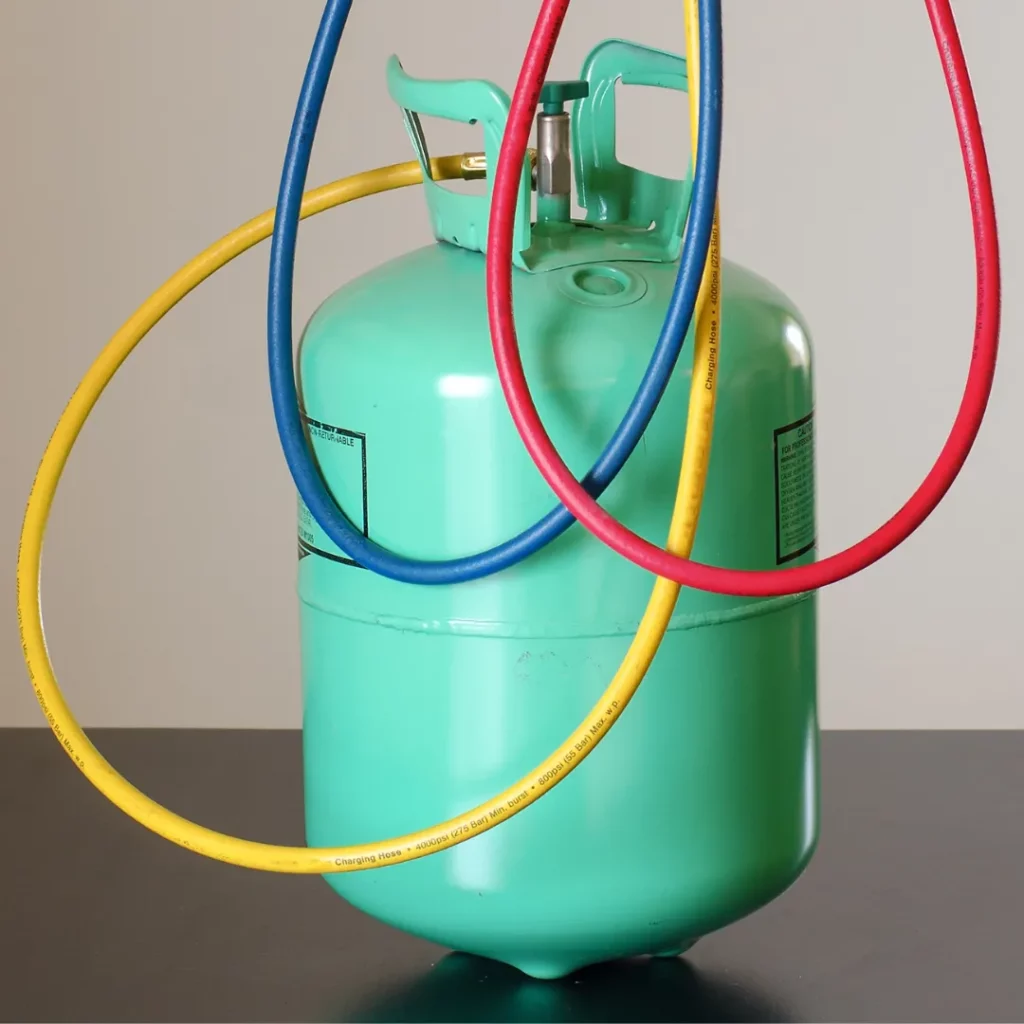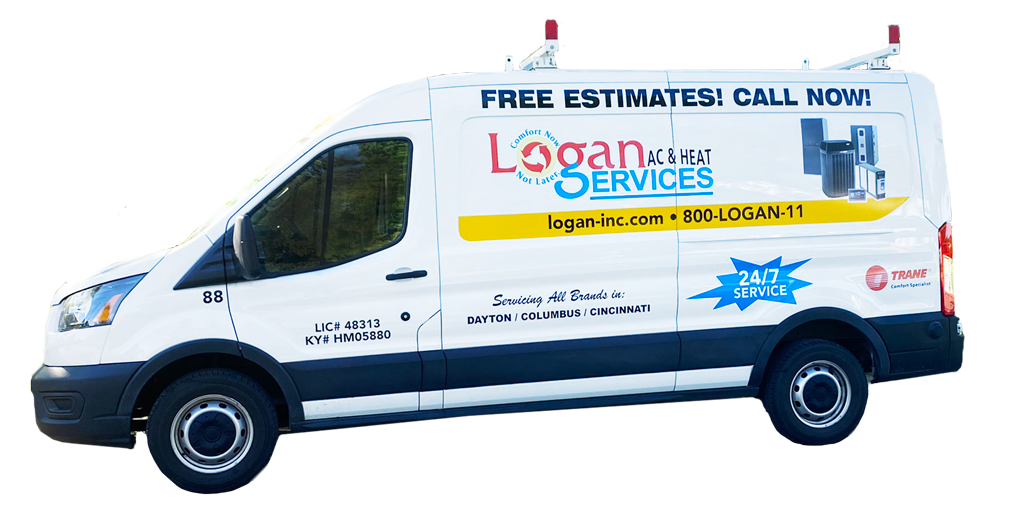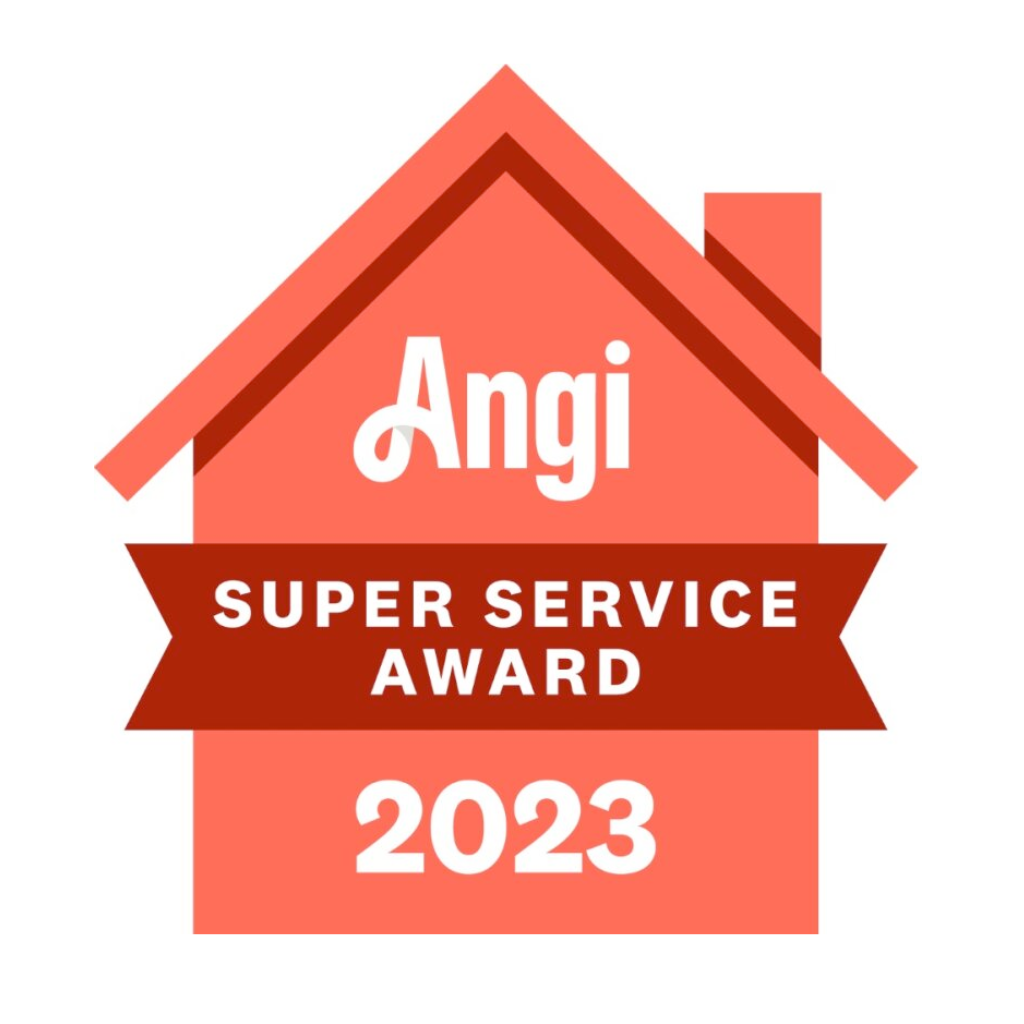You may have heard that the future of R-22 refrigerant is looking bleak. The rumors are true — the days of R-22 are limited and the clock is ticking.
Here is a timeline of the history and future of R-22, from its beginnings to its ban in production in 2020.
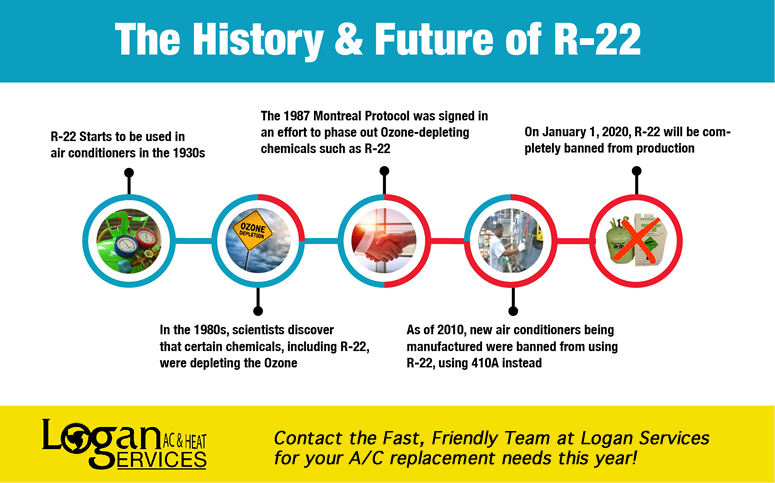
R-22 Used In Air Conditioners
Since the 1930s, R-22 (also known as Freon or HCFC-22) has been used in refrigeration and air conditioning.
It is a hydrochlorofluorocarbon (HCFC) that was widely used in air conditioners and heat pumps until it was phased out in 2020 due to its ozone-depleting properties. R22 is a colorless, odorless gas with a boiling point of -41.44°F (-40.8°C). It is a relatively efficient refrigerant, but it is also relatively expensive due to increased limited-availability.
Chemical Composition and Properties
The chemical composition of R22 refrigerant is CHClF2. It is a non-toxic and non-flammable gas. R22 has a high specific heat, which means that it can absorb a lot of heat for a given amount of mass.
Common Uses and Applications
R22 was the most widely used refrigerant in the world until it was phased out. It was used in a variety of applications, including:
- Air conditioners and heat pumps
- Refrigeration systems
- Foam blowing agents
- Cleaning solvents
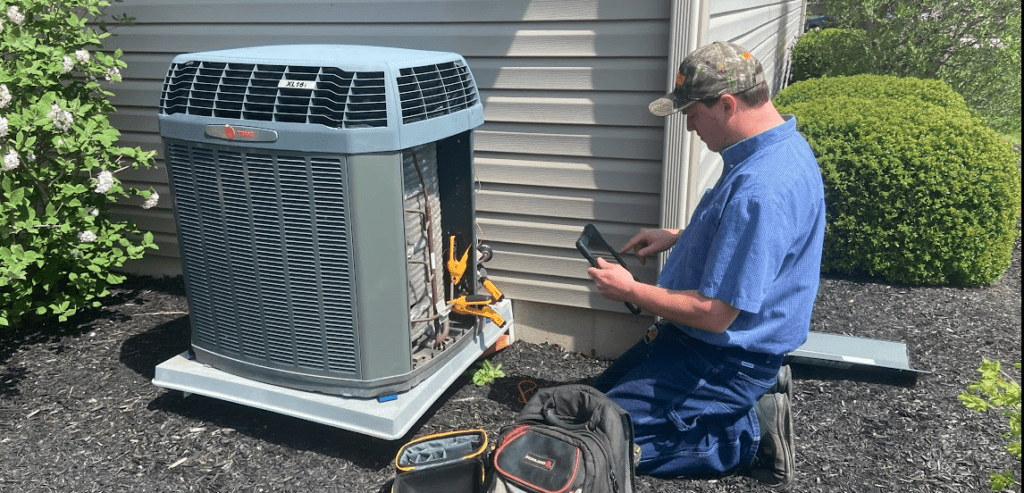
Environmental Impact
R22 is an ozone-depleting substance (ODS). When released into the atmosphere, R22 can react with ozone molecules, destroying them. Ozone is a layer in the atmosphere that protects life on Earth from harmful ultraviolet radiation. The Montreal Protocol, an international treaty to protect the ozone layer, phased out the production and use of R22 in 2020.
Discovery of the “Ozone Hole”
In the 1980s, scientists discovered the “ozone hole”. This “hole” in the upper atmosphere’s ozone layer threatens health risks to both people and the environment. Certain chemicals, including R-22, were recognized as ozone-depleting, and work began on finding solutions to this problem.
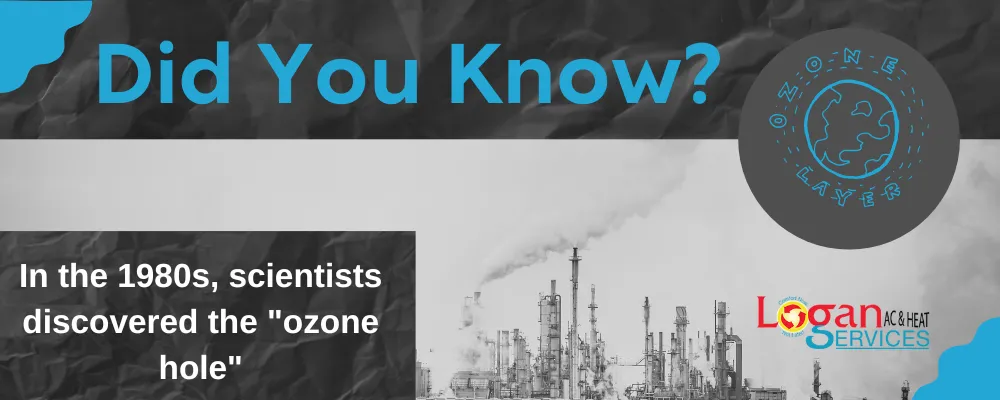
The 1987 Montreal Protocol
With the “ozone hole” a danger on a global scale, the Montreal Protocol treaty was drafted and signed by 197 countries. This treaty required that countries work toward phasing out ozone-depleting chemicals.
R-22 Phased Out of New Systems
By January of 2010, new HVAC systems being manufactured were banned from using R-22. 410A (also known as Puron) replaced R-22 to become the main refrigerant used in new AC units. However, existing systems that used R-22 could still be serviced, despite the increasing cost to refill them.
The End of R-22
As of January 1, 2020, R-22 has been banned completely from production. If your air conditioner still uses R-22, the next time your system leaks, replacing the old system may outweigh the repair cost.
Alternatives to R-22:
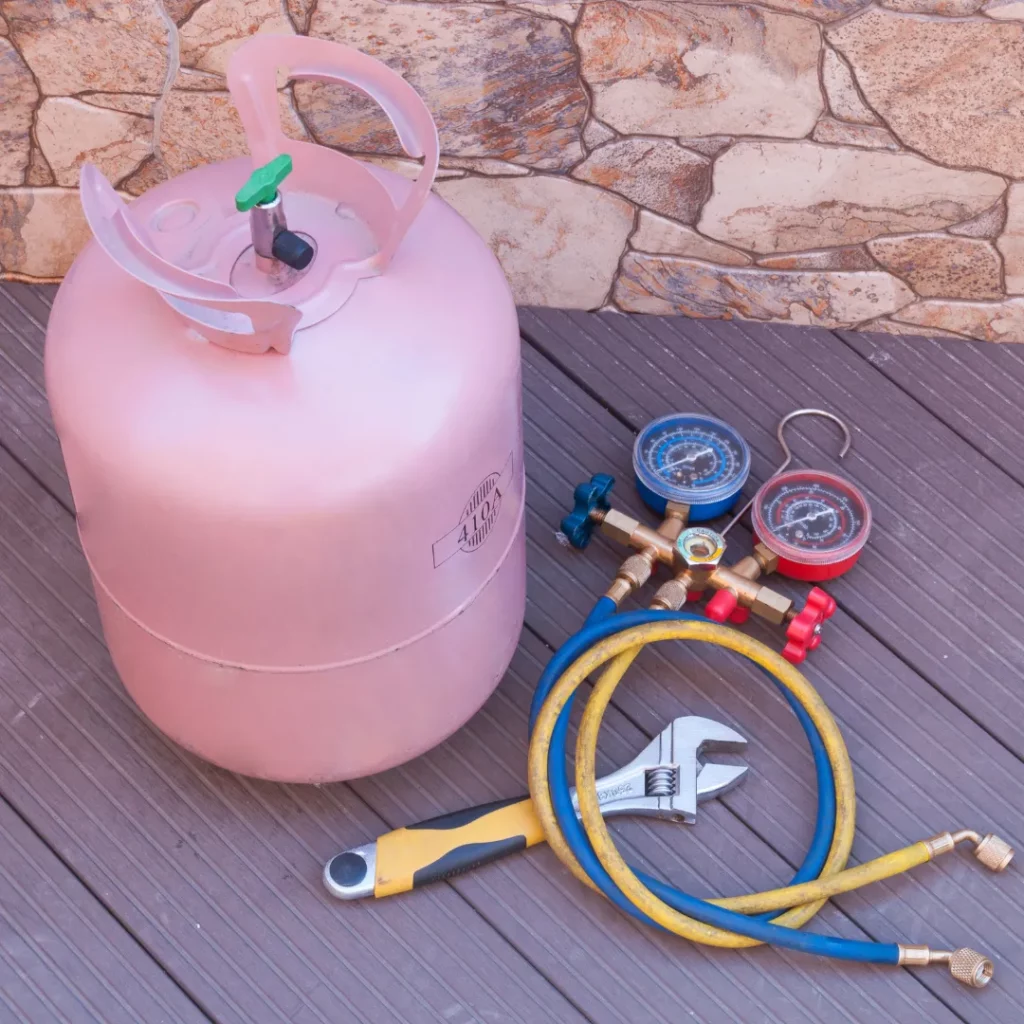
- R410A: A blend of hydrofluorocarbons (HFCs) that performs similarly to R22. It is known for its higher energy efficiency and better heat transfer capabilities than R22.
- R32: R32 is a newer HFC refrigerant that offers greater energy efficiency and is said to have lesser environmental impact than R410A and R22.
- R454B: R454b is a more environmentally friendly alternative to R-410a, which will soon be phased out, similarly to R-22.
These are just a few of the many alternatives to R22 refrigerant. The best application choice will depend on your system’s specific requirements.
Handling and Disposal of R22 Refrigerant
R22 is a hydrochlorofluorocarbon (HCFC) that was widely used in air conditioners and heat pumps until it was phased out in 2020 due to its ozone-depleting properties. R22 is still available, but it is more expensive than alternative refrigerants. If you have an air conditioner or heat pump that uses R22, it is important to handle and dispose of the refrigerant properly. Your HVAC company should abide by these requirements.
Safe Handling of R22
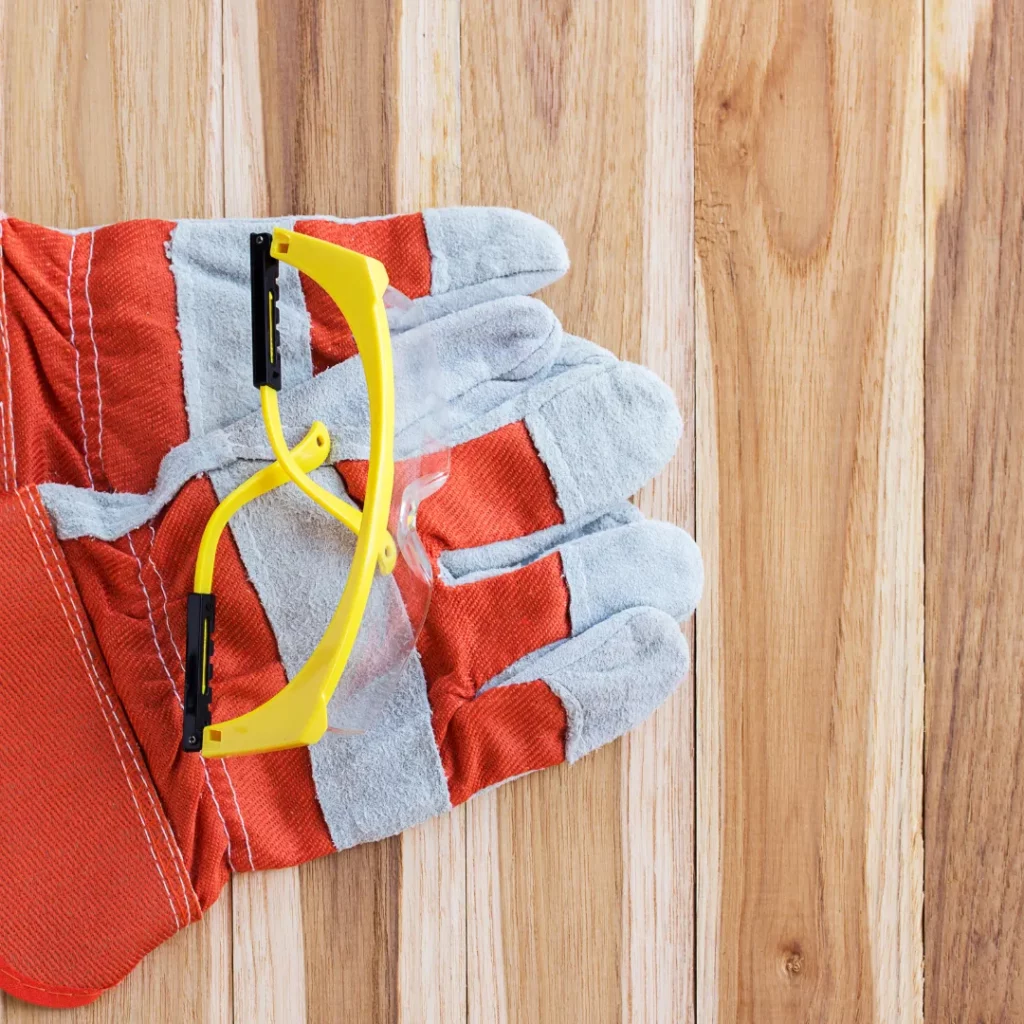
R22 is a non-toxic and non-flammable gas, but it can be harmful if inhaled in high concentrations. It is also a greenhouse gas, so it is important to minimize its release into the atmosphere.
Here are some safety precautions HVAC professionals take when handling R22:
- Always wear gloves and eye protection when working with R22.
- Do not inhale R22 vapors.
- Keep R22 away from open flames or sparks.
- Dispose of R22 properly.
Proper Disposal Methods
There are two main methods for disposing of R22:
- Recycling: R22 can be recycled and reused. This is the most environmentally friendly option.
- Disposal: R22 can be disposed of by incineration or destruction. This is a less environmentally friendly option, but it is sometimes necessary.
Regulatory Compliance
The EPA (Environmental Protection Agency) regulates the handling and disposal of R22. There are specific requirements for how R22 must be handled and disposed of in order to comply with EPA regulations.
When working with R22 refrigerant, being familiar with the EPA regulations is important, and your professional ac repair company should be trained to handle this. You can find more information about the EPA regulations for R22 refrigerant on the EPA website.
If your system has a history of leaking R-22, get ahead of the demand and have an HVAC technician take a look at your replacement options. You can see just how affordable a new air conditioner can be with a free in-home estimate today from a qualified HVAC professional!

Planning to do more research before moving forward with heating/cooling replacement? Explore some of our most popular HVAC research topics here >>

